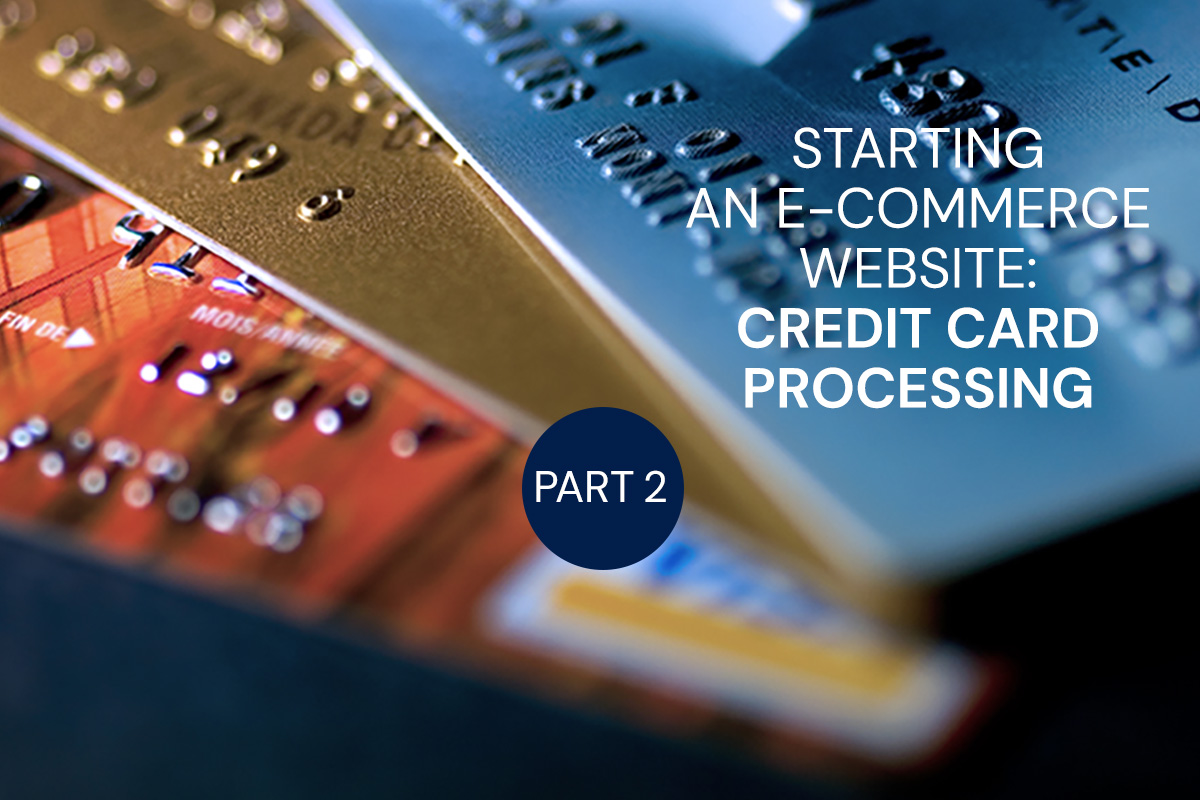In this series on considerations before setting up an e-commerce website, we’ll talk about payment processors. If you have run a brick-and-mortar store in the past, you’ve probably had a payment processor, and you know about the different fees charged by your payment processing company when you have the customer’s card in your hand or when you are taking an order over the phone. You may have even used a Square device, the ubiquitous payment gadget that attaches to an iPad. If you’ve been operating a physical store, then you may not have encountered any limitations in what payment processor you can use. You just call up a provider and negotiate a deal. Well, it’s not quite the same when you’re setting up an e-commerce store. With most third-party shopping carts, you are limited to a certain payment provider. If you’re selling certain items like firearms or e-cigarettes, you may be limited to a so-called “high-risk” provider, so you may not be able to use some of the e-commerce solutions listed below. Before choosing a platform, do your homework.
WordPress / WooCommerce
If you’re using WooCommerce to run your shopping cart, your payment methods are unlimited. You can choose any credit card processor that allows you to process online payments, including PayPal or even Bitcoin. Because WordPress is an open-source platform, there are no fees other than what your credit card payment processor is charging you.
Squarespace
Squarespace limits you to Stripe for credit card transactions. The Stripe fees themselves are fairly standard at 2.9% + 30 cents per successful credit card charge. There is no setup fee or monthly fee. Unless you signed up for Squarespace before November 3, 2015, however, you may also be charged a fee from Squarespace. Learn more about Squarespace fee schedules here. We’ve written about some of the other challenges we’ve encountered when setting up e-commerce on Squarespace sites, and you may want to read this post before choosing Squarespace.
Shopify
Shopify’s transaction fees are fairly standard at 2.9% + 30 cents for their basic plan, and if you purchase one of their more expensive plans, the fees go as low as 2.4% + 30 cents. See their transaction fees here. One thing we especially like about Shopify is that they also offer a credit card reader that attaches to an iPhone and allows you to take payments in person—very similar to Square. You do also have the option of using your own credit card processing company, and their options are nearly limitless. If you do use a payment gateway other than Shopify’s, however, you’ll end up paying an additional transaction fee from Shopify:
If you decide to go with an outside gateway to process your credit cards you will pay their fees plus an additional fee from us the fees are as follows: 2% on basic, 1% on professional, .5% on unlimited.
BigCommerce
Like Shopify, BigCommerce is another robust solution for e-commerce. The processing fee for debit and credit cards begins at 2.9% + 30 cents per transaction for all BigCommerce plans. Based on the plan you choose or are upgraded to, you may be eligible for that plan’s published processing rate. BigCommerce offers a wide choice of payment gateways, which you can read more about here. Unlike Shopify, there is no additional transaction fee from Shopify—just the credit card processing fee itself.
Obviously, there are a lot more e-commerce platforms out there. With fees that vary as much as you see here, it’s critical for you to compare platforms before choosing one. After all, these fees will directly affect your bottom line, and they do add up. Need help with choosing a platform? We’re happy to help!







